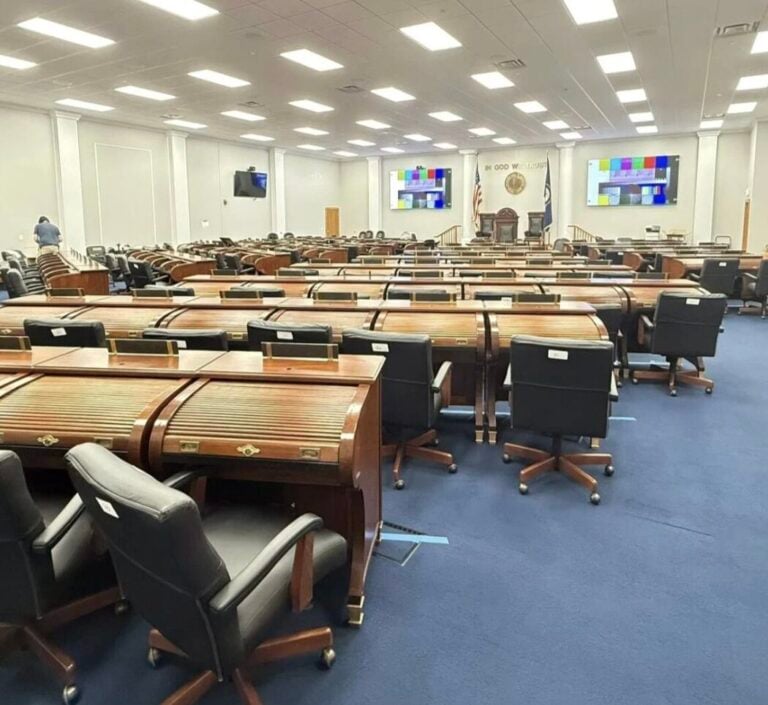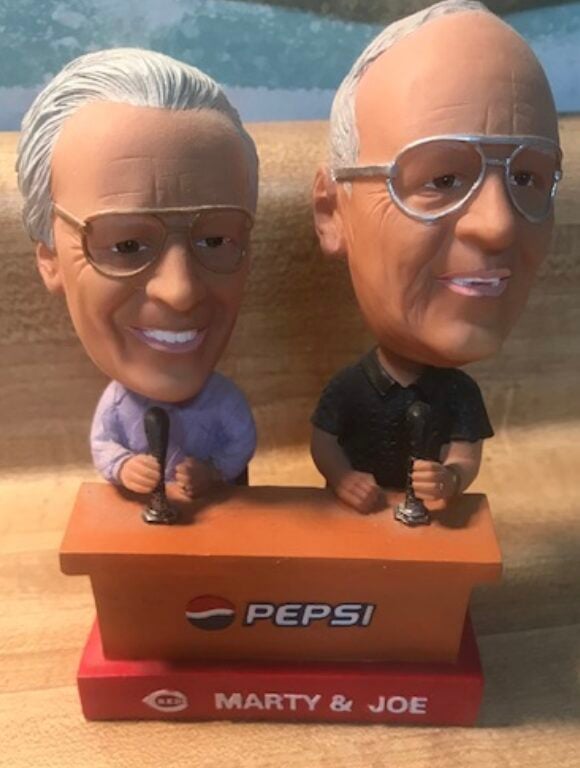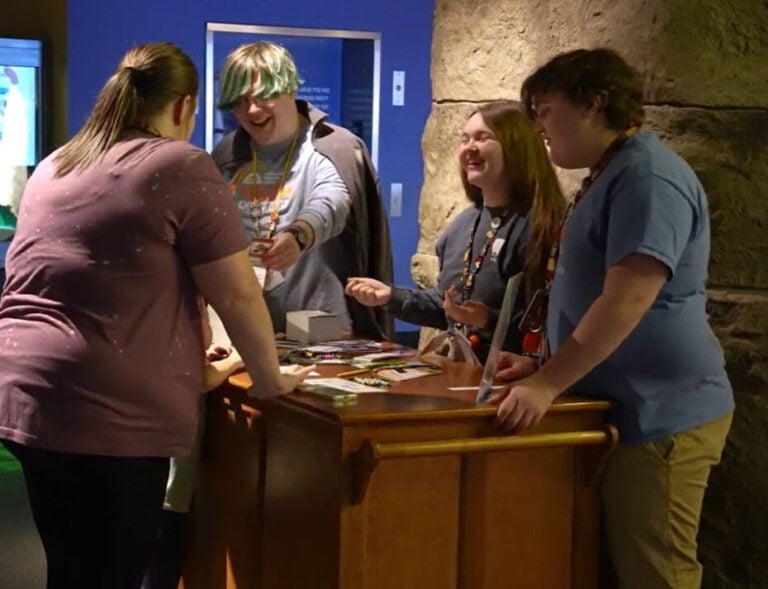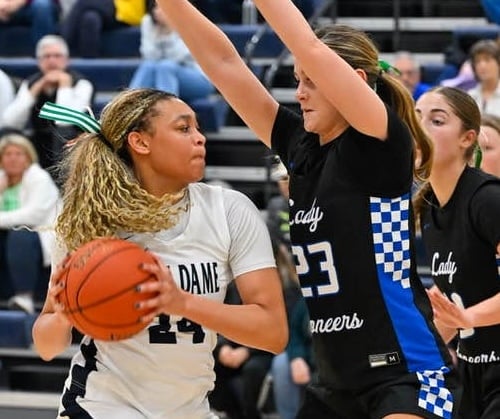There are so many shades of gray in artist Kerrie Pullen’s “Bridgeable Shores” – but so much energy in the larger-than-life cutouts currently on exhibit at the Murray Art Guild — the gallery seems suffused with color and sound.
In the installation entitled “Pilipinas Party,” outsized paperdolls are making music. One plays the piano while another strums a guitar. Flowers bloom, butterflies flutter, vines twist and entwine the limbs of what could be a family tree.
“Faraway Embrace” features two Filipino women leaning toward each other, index fingers pointing, stretching, touching magically across the miles that separate them. A central figure, halo’d by the sun, holds two children. At the bottom are two hands, palms up, each holding a lone flower.

The assemblage entitled “Your Best American Girl” appears to be a classroom. Five students sit in desks, four facing front while one turns her head and looks at the viewer. The “teacher,” a figure with caricature features resembling WWII-era cartoons, holds a pointer and appears to be amused by his own lecture. Rising from cans of Vienna Sausage, the roots of the scene morph into hands that stretch to reach the desks in the classroom.
On the gallery floor, black cushions are evenly spaced in a semi-circle, as if arranged for some kind of story hour. The placement of the cushions allows onlookers to sit and read the printed matter on individual cards, each decorated with the image of a can of SPAM, in full color, and a portrait sketched in endless variations of gray.
SPAM and Vienna Sausage images hearken back to WWII, when Americans introduced the foods to the Philippines. Since then, traditional recipes from the culture have incorporated them, another form of “Bridging Shores” between the island nation and America.
Adding another layer of complexity to the exhibition, the placards include snippets of interviews that chronicle the experiences of other Filipino Americans. Stephanie, age 34, from South Carolina, said, “Throughout elementary school, my peers commented on the thickness of my hair, the darkness of my skin, and the shape of my eyes. I would bring traditional Filipino foods, such as sinigang or adobo, as my school lunch and receive remarks about how my food ‘smelled weird.’”
Karen, age 29, from Kentucky expresses a different sentiment: “One of the main parts of what it means to me to be Filipino is the food,” she remarked. “When non-Filipino family and friends try our traditional filipino dishes, they are excited by the salty sweet and sour flavors.”
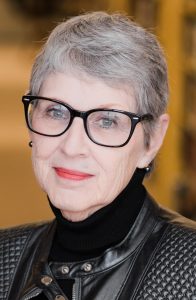
From Texas, Jen, age 23, mentions being treated differently at restaurants or public places compared to “white-passing” individuals.
“Where the waiter or shopkeeper is sociable and friendly with the other patrons, as soon as it’s your turn, their demeanor makes a complete 180. Smile turns to frown and they’re all aloof and abrupt with you,” she said.
On still another aspect of the cultural divide, Kentuckian Jasene, age 31, reports on her research about the impact of colonialism and ethnic identity on mental health.
“Colonial mentality is the idea that people from colonized places tend to view values and standards of beauty of the colonizer as good,” she declared, “while viewing those of the indigenous as being bad.
For instance,” she continued, “Filipinos tend to view those with light skin as more beautiful or attractive, and those who speak English without Filipino accents as smarter or more sophisticated. Perhaps this is the reason why so many Filipino-Americans, including me, were never taught by our parents to speak their native language.”
Through this exhibition, Ms. Pullen, a student in the Department of Art and Design at Murray State University, strives to connect to her Filipino heritage. She is white and Filipino, and was inspired to explore this duality in her creative work as she learned more about her mother’s migration to the U.S.
“It has changed my perception of cultural identity and traditional art,” Pullen explained.
Examining questions like, “Who am I to know anything about what it’s like to be Filipino?” has led to introspection about being different and isolated because of her heritage. Through this quest, Pullen has also discovered connections to an unfamiliar environment.
Patterns of black and white expose nuanced spaces that uncover various aspects of colonization, racism, community, family, history, and traditions. In their midst, Pullen also finds a safe space and love.
Every year the MAG presents our “MAGpie Award” at the Murray State University OMAS group’s Annual Student Art exhibition. This award consists of a cash prize, a pie, and the opportunity to exhibit at the MAG in September. Kerrie is the 2022 recipient.
“Bridgeable Shores” is on view at the Murray Art Guild until October 22. Located on 500 North 4th Street. The phone is 270-753-4059. Business hours are Tuesday to Friday, 10 a.m. to 4 p.m., and Saturday, 10 a.m. to 2 p.m.









